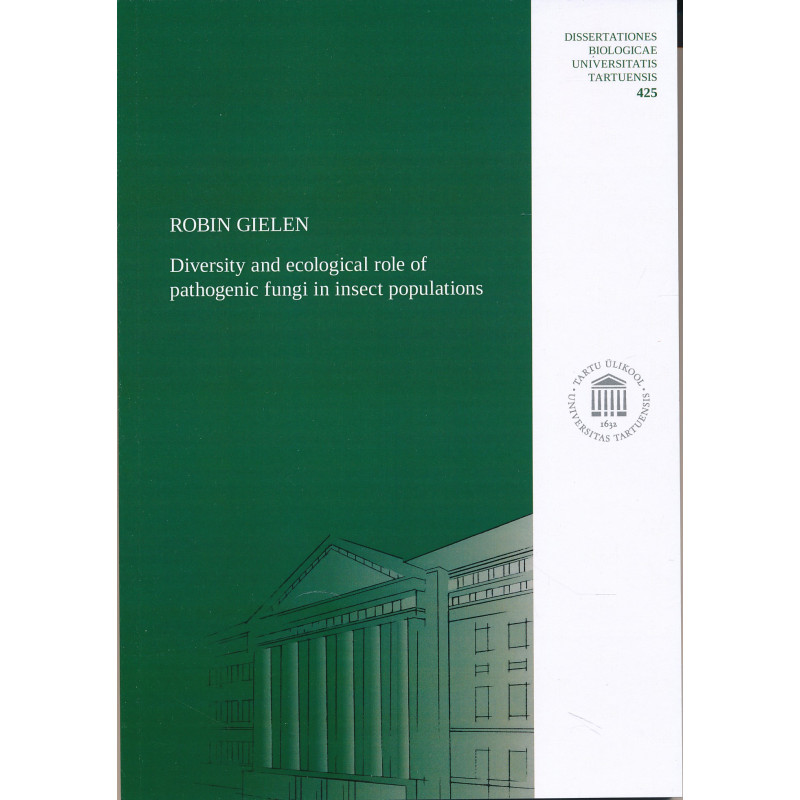




Robin Gielen
Tartu : Tartu Ülikooli Kirjastus, 2023
138 p. : ill.
ISBN: 9789916273463
Dissertationes biologicae Universitatis Tartuensis, 1024-6479 ; 425
Paperback dissertation in very good condition.
The number of insects is primarily regulated by their mortality, which is mostly attributable to the natural enemies of insects: predators, parasitoids and pathogens. Among those, pathogens are the most diverse and understudied group of insect mortality agents, belonging to groups like viruses, bacteria, fungi and nematodes. Due to the ability to infect insects through physical contact, fungi have the biggest potential for application in biocontrol. The aims of my thesis project were to evaluate the diversity of entomopathogenic fungi in natural populations of insects, and to describe the resulting patterns of insect mortality, discussed in the context of population dynamics and evolutionary ecology. For this purpose we conducted experiments in semi-natural conditions in Estonia and Argentina, surveyed natural populations and analysed literature, which resulted in four research papers and a manuscript. We found high diversity of fungal species (38) infecting Lepidoptera. Furthermore, an analysis of papers reporting observations from natural populations yielded data on 122 fungal species infecting insects. However, fungal infections cause only about 10% of insect population mortality that is likely not sufficient to facilitate a major role in regulating insect populations. Nevertheless, as fungi are always present in the environment, there should be some factors influencing which insect gets infected and which does not. In my thesis project, I found that the fungal infection with fungus may depend on the plant the insect is feeding on. This is in concordance with the bodyguard hypothesis, which states that plants support the growth of fungi in their tissues while gaining defense against herbivores. Additionally, my work revealed species from phylum Mortierellomycota and other taxa previously not known to act as entomopathogens.